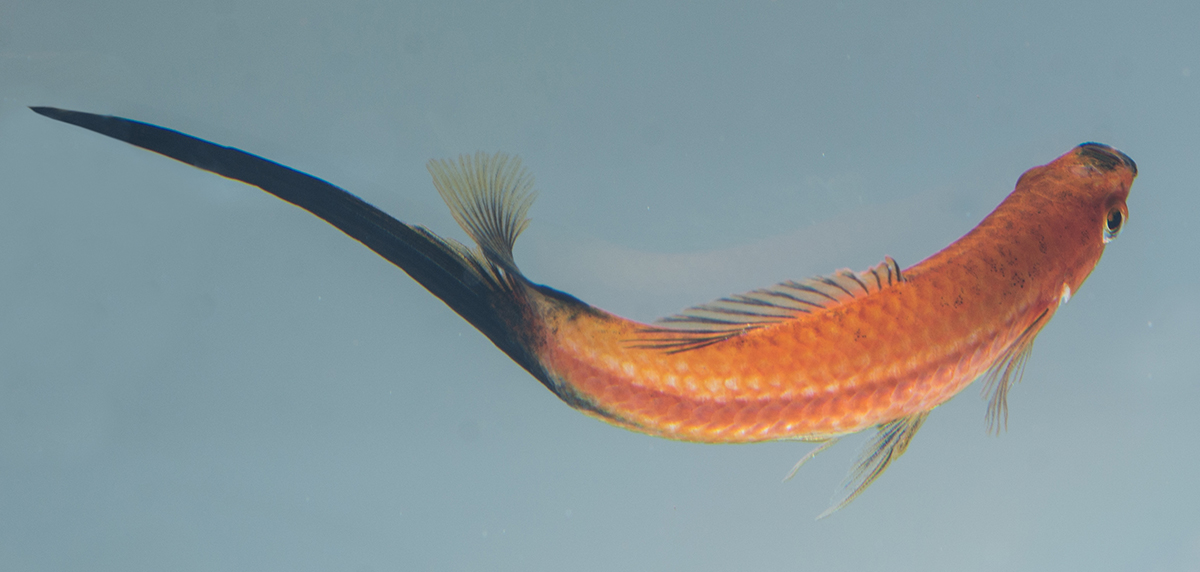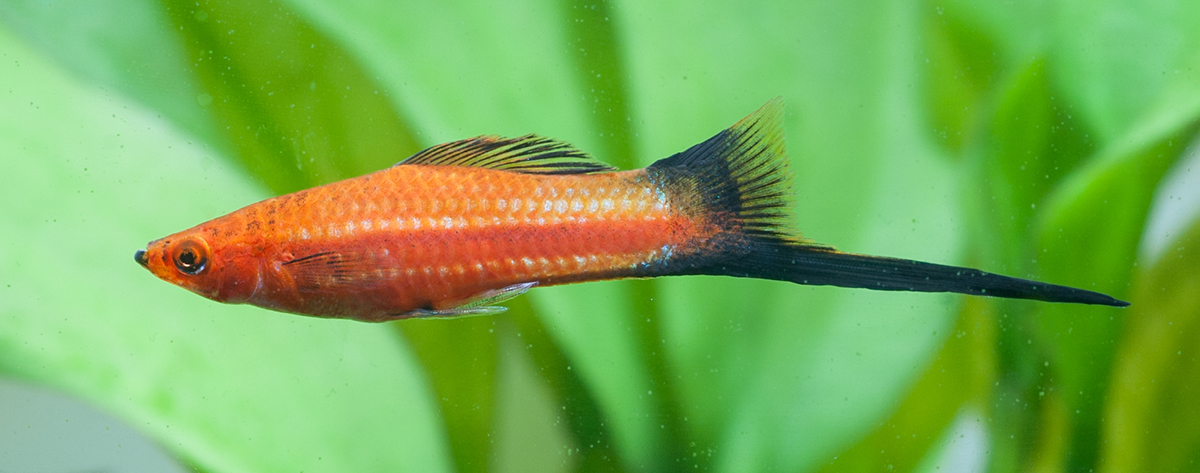Characteristics/origin
The swordtail gets its name from the shape of its tail fin. The lower part of the fin sticks out like a sword and often measures up to a third of its total body length. However, only the males have this sword-like part on their tail fins.
Xiphophorus helleri come from Central America, where they can be found from Mexico to Guatemala. They belong to the live-bearing toothcarp family. Kept correctly, the males can grow to up to 10 cm in length (not counting the sword-like part of the tail fin). The females are a little larger. They can also live to 5 years of age. They were originally brown and green in colour but, thanks to the different breeds and cross-breeds, there are now many different bred species; those with red colourings are particularly popular.
Aquarium and water
To create an appropriate environment, Xiphophorus helleri should be kept in an aquarium with a minimum volume of 100 litres. Swordtails can be kept in aquarium water at tropical temperatures of 20°C to 27°C. Ideally, the water should be neutral to slightly alkaline (pH value: 7.0 – 8.5) with a hardness level of approx. 10 – 30° dGH.
Keeping conditions
Swordtails tend to form groups, and should therefore be kept in a shoal with many conspecifics. It is recommended to always keep just one male with several females because male swordtails can be very aggressive toward one another. Given their highly adaptable nature, these fish are suitable for community tanks. However, they should not be mixed with small and very sensitive fish. They work particularly well with robust barbs, other live-bearing toothcarps and bottom-feeding fish like catfish. Swordtails tend to prefer the middle to upper regions of the aquarium.
One distinguishing feature of the male Xiphophorus helleri is that there are two types: early-maturing and late-maturing. Late-maturing males develop their sexual characteristics very late and are often mistaken for females at first. Early-maturing males develop their sexual
characteristics at an early stage.

Planting and decoration
There should be abundant vegetation around the edges of the aquarium to allow the fish to withdraw and hide. You can also add a few floating plants. However, there must always be enough space for the fish to swim. It is also recommended to put a lid or cover on your aquarium because swordtails are very good jumpers.
Diet
Swordtails are omnivores and can be fed dry food, live food and frozen food. TetraMin and Tetra Menu are particularly suitable.

